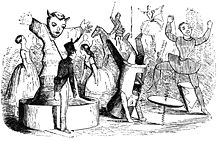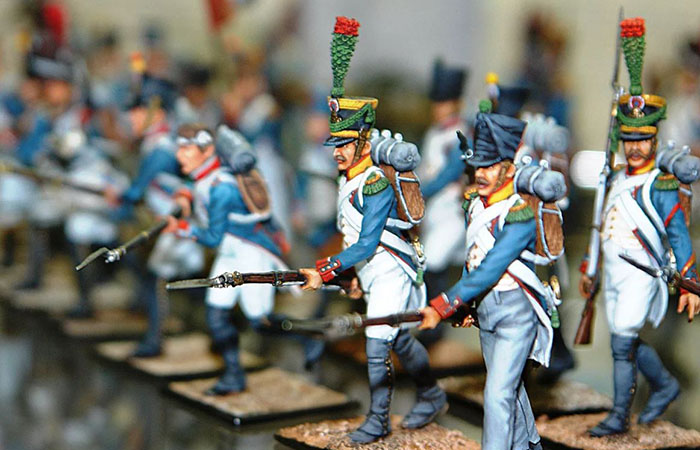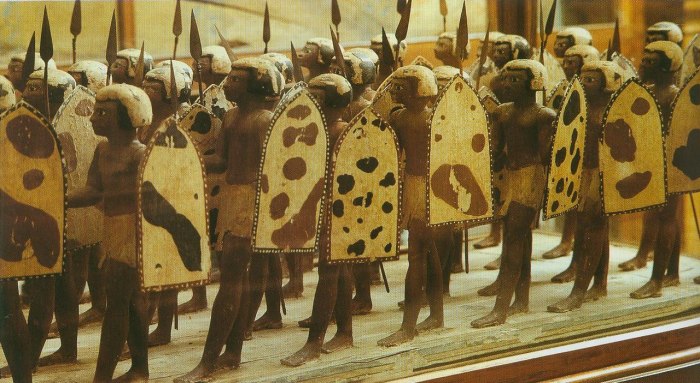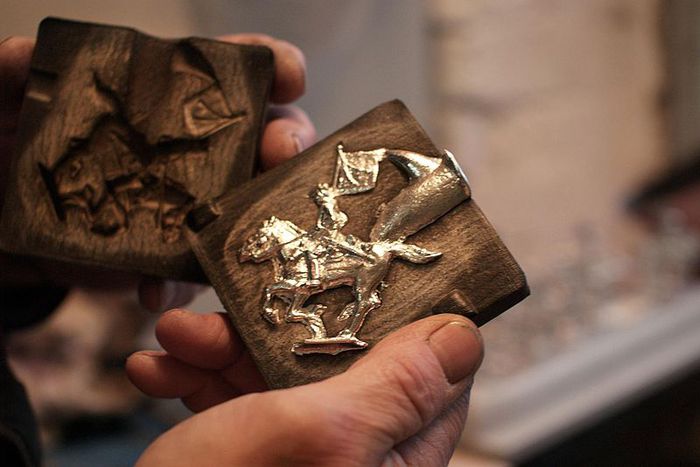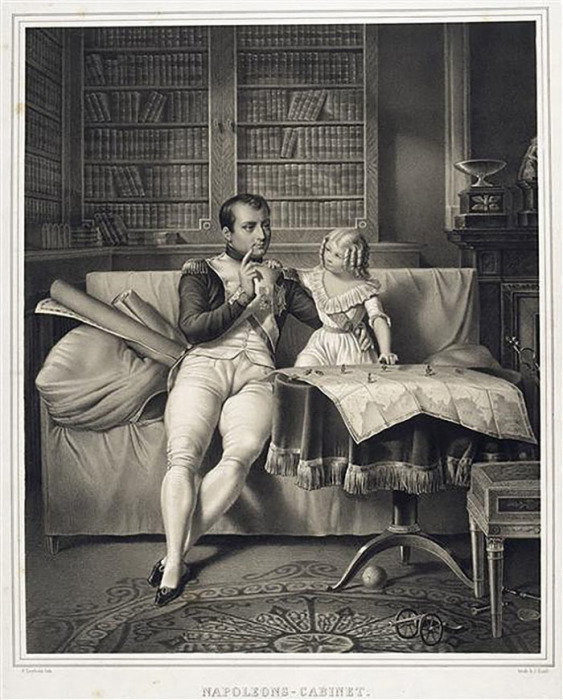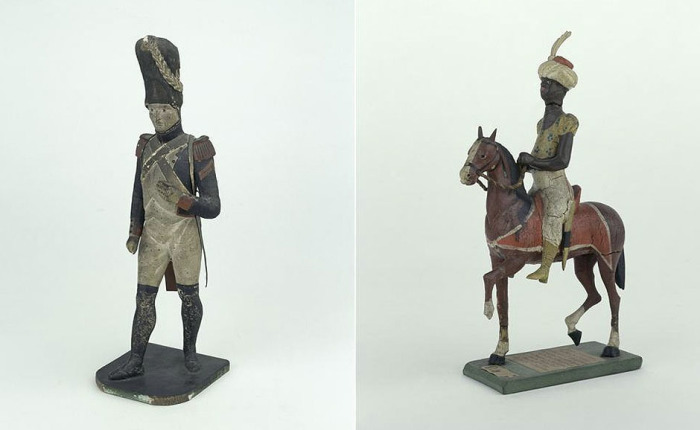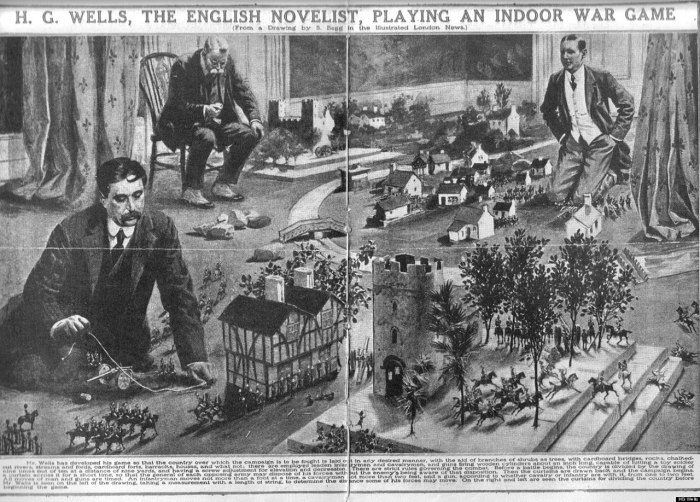| «The Steadfast Tin Soldier» | ||
|---|---|---|
| by Hans Christian Andersen | ||
| Original title | Den Standhaftige Tinsoldat | |
| Country | Denmark | |
| Language | Danish | |
| Genre(s) | Literary fairy tale | |
| Published in | Fairy Tales Told for Children. First Collection. First Booklet (Eventyr, fortalte for Børn. Ny Samling. Første Hefte) | |
| Publication type | Fairy tale collection | |
| Publisher | C.A. Reitzel | |
| Media type | ||
| Publication date | 2 October 1838 | |
| Chronology | ||
|
«The Steadfast Tin Soldier» (Danish: Den standhaftige tinsoldat) is a literary fairy tale by Hans Christian Andersen about a tin soldier’s love for a paper ballerina. The tale was first published in Copenhagen by C.A. Reitzel on 2 October 1838 in the first booklet of Fairy Tales Told for Children. New Collection. The booklet consists of Andersen’s «The Daisy» and «The Wild Swans». The tale was Andersen’s first not based upon a folk tale or a literary model. «The Steadfast Tin Soldier» has been adapted to various media including ballet and animated film.
Plot[edit]
On his birthday, a boy receives a set of 25 toy soldiers all cast from one old tin spoon and arrays them on a table top. One soldier stands on a single leg because, as he was the last one cast, there was not enough metal to make him whole. Nearby, the soldier spies a pretty paper ballerina with a spangle on her sash. She, too, is standing on one leg, and the soldier falls in love. That night, a goblin among the toys in the form of a jack-in-the-box, who also loves the ballerina, angrily warns the soldier to take his eyes off her, but the soldier ignores him.
The next day, the soldier falls from a windowsill (presumably the work of the goblin) and lands in the street. Two boys find the soldier, place him in a paper boat, and set him sailing in the gutter. The boat and its passenger wash into a storm drain, where a rat demands the soldier pay a toll.
Sailing on, the boat is washed into a canal, where the tin soldier is swallowed by a fish. When this fish is caught and cut open, the tin soldier finds himself once again on the table top before the ballerina. Inexplicably, the boy throws the tin soldier into the fire, which is most likely the work of the jack-in-the-box goblin. A wind blows the ballerina into the fire with him; she is consumed by it. The maid cleans the fireplace in the morning and finds that the soldier has melted into a little tin heart, along with the ballerina’s spangle, which is now burned as black as coal.
Publication[edit]
The tale was first published in Copenhagen, Denmark by C. A. Reitzel on 2 October 1838 in Fairy Tales Told for Children. First Collection. First Booklet Other tales in the booklet include «The Daisy» and «The Wild Swans». The tale was republished in collected editions of Andersen’s work, first, on 18 December 1849 in Fairy Tales and again on 15 December 1862 in the first volume of Fairy Tales and Stories.[1]
[edit]
Joan G. Haahr writes in The Oxford Companion to Fairy Tales: «The story is unusual among Andersen’s early tales, both in its emphasis on sensual desire and in its ambiguities. Blind fate, not intention, determines all events. Moreover, the narrative questions the very decorum it praises. The tin soldier’s passive acceptance of whatever happens to him, while exemplifying pietistic ideals of self-denial, also contributes to his doom. Were he to speak and act, the soldier might gain both life and love. Restrained, however, by inhibition and convention, he finds only tragedy and death. The tale is often read autobiographically, with the soldier viewed as symbolizing Andersen’s feelings of inadequacy with women, his passive acceptance of bourgeois class attitudes, or his sense of alienation as an artist and an outsider, from full participation in everyday life.»[2]
Adaptations[edit]
Ub Iwerks did a 1934 Cinecolor cartoon based on the story entitled «The Brave Tin Soldier». The cartoon’s plot is slightly different from the original story. The antagonist is not a Jack-in-the-Box, but rather a toy king who wants the ballerina for himself. The tin soldier attacks the king, and as a result is put on trial and sentenced to death via firing squad. The ballerina pleads for his life to be spared, but her pleas go ignored. She then stands alongside the tin soldier and both are shot into a burning fireplace, where he melts into the shape of a heart with her. The cartoon has a happy ending, as both the tin soldier and ballerina are sent to «Toy Heaven», where the tin soldier now has both legs.
In the 1940 Disney animated film Fantasia, a shorter/shortened version of the tale was planned for the film as indicated by 1938 storyboards. Unfortunately, the ending of the segment did not satisfy Walt Disney and the story was set aside.
George Pal’s war-themed 1941 Puppetoon, «Rhythm in the Ranks», is likely a loose adaptation of Andersen’s story, with a toy soldier getting discharged after falling in love with an ice-skating ballerina.
Paul Grimault (with Jacques Prévert) did a 1947 colour French cartoon Le Petit Soldat that portrayed the title character as a toy acrobat who is called to war and returns crippled but determined to rescue his ballerina.
Marcia Brown’s 1953 picture book illustrating the story in M. R. James’s translation was awarded a Caldecott Honor.
Ivo Caprino’s 1955 puppet movie «The Steadfast Tin Soldier».
Shawn Phillips’s 1964 song ‘Little Tin Soldier’ is also based on the Hans Christian Andersen tale and was covered by Donovan in 1965.
The Small Faces 1967 song Tin Soldier opens with the lyric «I am a little tin soldier that wants to jump into your fire», and appears to have been influenced by the Andersen story.
In 1971, the Japanese anime anthology series Andersen Monogatari made an episode adaptation.[citation needed]
Andersen’s contemporary August Bournonville choreographed the tale for his ballet A Fairy Tale in Pictures, and George Balanchine choreographed the tale in 1975, allowing the soldier and the ballerina to express their love before the ballerina is blown into the fire.[3] Georges Bizet set the tale to music in Jeux d’Enfants.[3]
In 1976, Soyuzmultfilm made an animated adaptation.
A live action musical adaptation was the second of four episodes of The Enchanted Musical Playhouse that originally aired from 1984 to 1985 on the (then) brand new Disney Channel.[4][5]
In 1985, Harmony Gold made an English dub of The Little Train adaptation of the story, the film was originally made in Italy in the late 70s.
In 1986, Atkinson Film-Arts made an animated adaptation featuring the voices of Rick Jones, Terrence Scammell, and Robert Bockstael, with narration by Christopher Plummer.
In 1989, Studio Miniatur Filmowych made an animated adaptation.[6]
In 1991, it was adapted into an animated television movie as part of Timeless Tales from Hallmark which was produced by Hanna-Barbera and Hallmark. It featured the voices of George Newbern as the Tin Soldier, Megan Mullally as the Ballerina, Tim Curry as the Jack-in-the-box and Paul Williams as a frog named Frogbauten. It was Curry’s second clown role after he played Pennywise in It (1990).
Children’s author Tor Seidler adapted the book in 1992, with illustrations by Fred Marcellino.[7]
1995 saw Jon Voight make his directorial debut with The Tin Soldier, a Showtime family film loosely based on Andersen’s story.
In 1996, Vivian Little and Kathleen Mills adapted Anderson’s story into a full-length ballet for the Dance Fremont studio in Seattle. The ballet is still produced every winter, as an alternative to the popular Christmas ballet The Nutcracker, which many American studios produce in December. Dance Fremont centers the story around a young deaf boy who receives the toys for Christmas, and uses Signed Exact English for all dialogue.[8]
In the 2000 Disney animated film Fantasia 2000, an adaptation of the tale is set to the first movement of the Piano Concerto No. 2 in F Major by Dmitri Shostakovich. The segment differs slightly from Andersen’s tale: there are only five soldiers, but still only one with one leg; the ballerina appears to be made of porcelain; the soldier is disappointed to discover the ballerina has two legs, but the ballerina still accepts him; at the end, the jack-in-the-box villain is the one that perishes in the fire instead of the soldier and ballerina who both remain in one piece.[3] Other animated films for children have been produced on the tale, and, in 1975, a science fiction fantasy feature film, The Tin Soldier.[2]
In 2002 the series The Fairytaler adapted it in the story «The Hardy Tin Soldier».
The music video of Anastacia’s 2005 song Heavy on My Heart was loosely inspired by Andersen’s story.
In Stieg Larsson’s 2006 thriller The Girl Who Played with Fire, the fiercely independent protagonist Lisbeth Salander compares the journalist Mikael Blomkvist, who had stayed loyal to her despite her repeated blatant rejection of him, with Andersen’s steadfast tin soldier (implicitly comparing herself with Andersen’s ballerina).[9]
Mike Mignola’s graphic novel Baltimore, or The Steadfast Tin Soldier and the Vampire fuses the poignancy of «The Steadfast Tin Soldier» with supernatural Dracula myths, set in a post-World War I environment.[10] Kate DiCamillo’s The Miraculous Journey of Edward Tulane (2006) makes use of the tale’s themes.[3]
The Hanson song Soldier is also based on this fairy tale. The song doesn’t mention the goblin at all. The tin soldier fell out the window when the wind blew and the tin soldier and ballerina melted together while dancing and the ballerina fell near the fireplace.
In Anirudh Arun’s 2013 bildungsroman The Steadfast Tin Soldier?, the protagonist Ashwin is compared to the tin soldier by his successful brother Abhinav (the society thus plays the part of the dangerous jack-in-the-box).[11]
Daft Punk’s music video for the song «Instant Crush» is said to have been inspired by «The Steadfast Tin Soldier».
References[edit]
- Footnotes
- ^ «Hans Christian Andersen: The Steadfast Tin Soldier». The Hans Christian Andersen Center. Retrieved 2009-09-22.
- ^ a b Zipes 497
- ^ a b c d Andersen 2008 224
- ^ «The Steadfast Tin Soldier — The Enchanted Musical Playhouse». Archived from the original on 2021-12-13. Retrieved 8 February 2017.
- ^ Bunce, Alan (August 30, 1985). «`Enchanted Musical Playhouse’ series fills gap in home video for children». The Christian Science Monitor. Archived from the original on January 28, 2019. Retrieved January 27, 2019.
- ^ «FilmPolski.pl».
- ^ Dirda, Michael (1992-12-06). «Yule Bookshelf». The Washington Post. Archived from the original on 2018-11-20.
- ^ «About the Steadfast Tin Soldier».
- ^ The Girl Who Played with Fire, Chapter 29.
- ^ Fiction Reviews: Week of 7/30/2007 at Publishers Weekly.
- ^ The Steadfast Tin Soldier?, Chapter «There and Back Again»
- Works cited
- Andersen, Hans Christian; Tatar, Maria (Ed. and transl.) (2008), The Annotated Hans Christian Andersen, New Yorkand London: W. W. Norton & Company, Inc., ISBN 978-0-393-06081-2
- Andersen, Hans Christian; Nunnally, Tiina (Transl.); Wullschlager, Jackie (Ed.) (2005) [2004], Fairy Tales, New York: Viking, ISBN 978-0-670-03377-5
- Zipes, Jack, ed. (2003), The Oxford Companion to Fairy Tales: The Western Fairy Tale Tradition from Medieval to Modern times, Oxford and New York: Oxford University Press, ISBN 978-0-19-860509-6
External links[edit]
Wikisource has original text related to this article:
Danish Wikisource has original text related to this article:
- «Den Standhaftige Tinsoldat». Original Danish text
- «Den Standhaftige Tinsoldat». Original Danish text (Royal Library)
- “The Steadfast Tin Solder“. English translation by Jean Hersholt
| «The Steadfast Tin Soldier» | ||
|---|---|---|
| by Hans Christian Andersen | ||
| Original title | Den Standhaftige Tinsoldat | |
| Country | Denmark | |
| Language | Danish | |
| Genre(s) | Literary fairy tale | |
| Published in | Fairy Tales Told for Children. First Collection. First Booklet (Eventyr, fortalte for Børn. Ny Samling. Første Hefte) | |
| Publication type | Fairy tale collection | |
| Publisher | C.A. Reitzel | |
| Media type | ||
| Publication date | 2 October 1838 | |
| Chronology | ||
|
«The Steadfast Tin Soldier» (Danish: Den standhaftige tinsoldat) is a literary fairy tale by Hans Christian Andersen about a tin soldier’s love for a paper ballerina. The tale was first published in Copenhagen by C.A. Reitzel on 2 October 1838 in the first booklet of Fairy Tales Told for Children. New Collection. The booklet consists of Andersen’s «The Daisy» and «The Wild Swans». The tale was Andersen’s first not based upon a folk tale or a literary model. «The Steadfast Tin Soldier» has been adapted to various media including ballet and animated film.
Plot[edit]
On his birthday, a boy receives a set of 25 toy soldiers all cast from one old tin spoon and arrays them on a table top. One soldier stands on a single leg because, as he was the last one cast, there was not enough metal to make him whole. Nearby, the soldier spies a pretty paper ballerina with a spangle on her sash. She, too, is standing on one leg, and the soldier falls in love. That night, a goblin among the toys in the form of a jack-in-the-box, who also loves the ballerina, angrily warns the soldier to take his eyes off her, but the soldier ignores him.
The next day, the soldier falls from a windowsill (presumably the work of the goblin) and lands in the street. Two boys find the soldier, place him in a paper boat, and set him sailing in the gutter. The boat and its passenger wash into a storm drain, where a rat demands the soldier pay a toll.
Sailing on, the boat is washed into a canal, where the tin soldier is swallowed by a fish. When this fish is caught and cut open, the tin soldier finds himself once again on the table top before the ballerina. Inexplicably, the boy throws the tin soldier into the fire, which is most likely the work of the jack-in-the-box goblin. A wind blows the ballerina into the fire with him; she is consumed by it. The maid cleans the fireplace in the morning and finds that the soldier has melted into a little tin heart, along with the ballerina’s spangle, which is now burned as black as coal.
Publication[edit]
The tale was first published in Copenhagen, Denmark by C. A. Reitzel on 2 October 1838 in Fairy Tales Told for Children. First Collection. First Booklet Other tales in the booklet include «The Daisy» and «The Wild Swans». The tale was republished in collected editions of Andersen’s work, first, on 18 December 1849 in Fairy Tales and again on 15 December 1862 in the first volume of Fairy Tales and Stories.[1]
[edit]
Joan G. Haahr writes in The Oxford Companion to Fairy Tales: «The story is unusual among Andersen’s early tales, both in its emphasis on sensual desire and in its ambiguities. Blind fate, not intention, determines all events. Moreover, the narrative questions the very decorum it praises. The tin soldier’s passive acceptance of whatever happens to him, while exemplifying pietistic ideals of self-denial, also contributes to his doom. Were he to speak and act, the soldier might gain both life and love. Restrained, however, by inhibition and convention, he finds only tragedy and death. The tale is often read autobiographically, with the soldier viewed as symbolizing Andersen’s feelings of inadequacy with women, his passive acceptance of bourgeois class attitudes, or his sense of alienation as an artist and an outsider, from full participation in everyday life.»[2]
Adaptations[edit]
Ub Iwerks did a 1934 Cinecolor cartoon based on the story entitled «The Brave Tin Soldier». The cartoon’s plot is slightly different from the original story. The antagonist is not a Jack-in-the-Box, but rather a toy king who wants the ballerina for himself. The tin soldier attacks the king, and as a result is put on trial and sentenced to death via firing squad. The ballerina pleads for his life to be spared, but her pleas go ignored. She then stands alongside the tin soldier and both are shot into a burning fireplace, where he melts into the shape of a heart with her. The cartoon has a happy ending, as both the tin soldier and ballerina are sent to «Toy Heaven», where the tin soldier now has both legs.
In the 1940 Disney animated film Fantasia, a shorter/shortened version of the tale was planned for the film as indicated by 1938 storyboards. Unfortunately, the ending of the segment did not satisfy Walt Disney and the story was set aside.
George Pal’s war-themed 1941 Puppetoon, «Rhythm in the Ranks», is likely a loose adaptation of Andersen’s story, with a toy soldier getting discharged after falling in love with an ice-skating ballerina.
Paul Grimault (with Jacques Prévert) did a 1947 colour French cartoon Le Petit Soldat that portrayed the title character as a toy acrobat who is called to war and returns crippled but determined to rescue his ballerina.
Marcia Brown’s 1953 picture book illustrating the story in M. R. James’s translation was awarded a Caldecott Honor.
Ivo Caprino’s 1955 puppet movie «The Steadfast Tin Soldier».
Shawn Phillips’s 1964 song ‘Little Tin Soldier’ is also based on the Hans Christian Andersen tale and was covered by Donovan in 1965.
The Small Faces 1967 song Tin Soldier opens with the lyric «I am a little tin soldier that wants to jump into your fire», and appears to have been influenced by the Andersen story.
In 1971, the Japanese anime anthology series Andersen Monogatari made an episode adaptation.[citation needed]
Andersen’s contemporary August Bournonville choreographed the tale for his ballet A Fairy Tale in Pictures, and George Balanchine choreographed the tale in 1975, allowing the soldier and the ballerina to express their love before the ballerina is blown into the fire.[3] Georges Bizet set the tale to music in Jeux d’Enfants.[3]
In 1976, Soyuzmultfilm made an animated adaptation.
A live action musical adaptation was the second of four episodes of The Enchanted Musical Playhouse that originally aired from 1984 to 1985 on the (then) brand new Disney Channel.[4][5]
In 1985, Harmony Gold made an English dub of The Little Train adaptation of the story, the film was originally made in Italy in the late 70s.
In 1986, Atkinson Film-Arts made an animated adaptation featuring the voices of Rick Jones, Terrence Scammell, and Robert Bockstael, with narration by Christopher Plummer.
In 1989, Studio Miniatur Filmowych made an animated adaptation.[6]
In 1991, it was adapted into an animated television movie as part of Timeless Tales from Hallmark which was produced by Hanna-Barbera and Hallmark. It featured the voices of George Newbern as the Tin Soldier, Megan Mullally as the Ballerina, Tim Curry as the Jack-in-the-box and Paul Williams as a frog named Frogbauten. It was Curry’s second clown role after he played Pennywise in It (1990).
Children’s author Tor Seidler adapted the book in 1992, with illustrations by Fred Marcellino.[7]
1995 saw Jon Voight make his directorial debut with The Tin Soldier, a Showtime family film loosely based on Andersen’s story.
In 1996, Vivian Little and Kathleen Mills adapted Anderson’s story into a full-length ballet for the Dance Fremont studio in Seattle. The ballet is still produced every winter, as an alternative to the popular Christmas ballet The Nutcracker, which many American studios produce in December. Dance Fremont centers the story around a young deaf boy who receives the toys for Christmas, and uses Signed Exact English for all dialogue.[8]
In the 2000 Disney animated film Fantasia 2000, an adaptation of the tale is set to the first movement of the Piano Concerto No. 2 in F Major by Dmitri Shostakovich. The segment differs slightly from Andersen’s tale: there are only five soldiers, but still only one with one leg; the ballerina appears to be made of porcelain; the soldier is disappointed to discover the ballerina has two legs, but the ballerina still accepts him; at the end, the jack-in-the-box villain is the one that perishes in the fire instead of the soldier and ballerina who both remain in one piece.[3] Other animated films for children have been produced on the tale, and, in 1975, a science fiction fantasy feature film, The Tin Soldier.[2]
In 2002 the series The Fairytaler adapted it in the story «The Hardy Tin Soldier».
The music video of Anastacia’s 2005 song Heavy on My Heart was loosely inspired by Andersen’s story.
In Stieg Larsson’s 2006 thriller The Girl Who Played with Fire, the fiercely independent protagonist Lisbeth Salander compares the journalist Mikael Blomkvist, who had stayed loyal to her despite her repeated blatant rejection of him, with Andersen’s steadfast tin soldier (implicitly comparing herself with Andersen’s ballerina).[9]
Mike Mignola’s graphic novel Baltimore, or The Steadfast Tin Soldier and the Vampire fuses the poignancy of «The Steadfast Tin Soldier» with supernatural Dracula myths, set in a post-World War I environment.[10] Kate DiCamillo’s The Miraculous Journey of Edward Tulane (2006) makes use of the tale’s themes.[3]
The Hanson song Soldier is also based on this fairy tale. The song doesn’t mention the goblin at all. The tin soldier fell out the window when the wind blew and the tin soldier and ballerina melted together while dancing and the ballerina fell near the fireplace.
In Anirudh Arun’s 2013 bildungsroman The Steadfast Tin Soldier?, the protagonist Ashwin is compared to the tin soldier by his successful brother Abhinav (the society thus plays the part of the dangerous jack-in-the-box).[11]
Daft Punk’s music video for the song «Instant Crush» is said to have been inspired by «The Steadfast Tin Soldier».
References[edit]
- Footnotes
- ^ «Hans Christian Andersen: The Steadfast Tin Soldier». The Hans Christian Andersen Center. Retrieved 2009-09-22.
- ^ a b Zipes 497
- ^ a b c d Andersen 2008 224
- ^ «The Steadfast Tin Soldier — The Enchanted Musical Playhouse». Archived from the original on 2021-12-13. Retrieved 8 February 2017.
- ^ Bunce, Alan (August 30, 1985). «`Enchanted Musical Playhouse’ series fills gap in home video for children». The Christian Science Monitor. Archived from the original on January 28, 2019. Retrieved January 27, 2019.
- ^ «FilmPolski.pl».
- ^ Dirda, Michael (1992-12-06). «Yule Bookshelf». The Washington Post. Archived from the original on 2018-11-20.
- ^ «About the Steadfast Tin Soldier».
- ^ The Girl Who Played with Fire, Chapter 29.
- ^ Fiction Reviews: Week of 7/30/2007 at Publishers Weekly.
- ^ The Steadfast Tin Soldier?, Chapter «There and Back Again»
- Works cited
- Andersen, Hans Christian; Tatar, Maria (Ed. and transl.) (2008), The Annotated Hans Christian Andersen, New Yorkand London: W. W. Norton & Company, Inc., ISBN 978-0-393-06081-2
- Andersen, Hans Christian; Nunnally, Tiina (Transl.); Wullschlager, Jackie (Ed.) (2005) [2004], Fairy Tales, New York: Viking, ISBN 978-0-670-03377-5
- Zipes, Jack, ed. (2003), The Oxford Companion to Fairy Tales: The Western Fairy Tale Tradition from Medieval to Modern times, Oxford and New York: Oxford University Press, ISBN 978-0-19-860509-6
External links[edit]
Wikisource has original text related to this article:
Danish Wikisource has original text related to this article:
- «Den Standhaftige Tinsoldat». Original Danish text
- «Den Standhaftige Tinsoldat». Original Danish text (Royal Library)
- “The Steadfast Tin Solder“. English translation by Jean Hersholt
Известно, что у Ганса Христиана Андерсена была коллекция солдатиков из 30 тысяч фигурок. Так что автор знаменитой сказки действительно знал толк в стойких оловянных бойцах. Многие знаменитые люди были поклонниками игрушечных армий и занимались их коллекционированием. Удивительно, что история этой игрушки насчитывает уже 4 тысячи лет, и в древности солдатиков создавали совсем не для игры.
В древние времена в Египте маленькие фигурки храбрых воинов закладывались в гробницы, чтобы они защищали своего повелителя в загробном мире. Правда, шли они в комплекте с простыми рабочими и крестьянами. Такие небольшие скульптуры назывались ушебти и выполняли они очень важную функцию – должны были прислуживать своему господину и даже отрабатывать вместо него повинность на полях Осириса. Чтобы ушебти не запутались и не ленились, все их обязанности перечислялись – устно, во время похорон, или письменно. Выполнялись они порой очень реалистично. Солдатики из гробницы Месехти, например, вылеплены из глины и раскрашены. Они изображают отряды египетских воинов с копьями и щитами и нубийских лучников. Самые древние солдатики, таким образом, датируются 2 000 лет до нашей эры.
Самые древние солдатики в мире — ушебти в виде египетских воинов из гробницы Месехти, номарха Асьюта. XX в. до н. э.
В средние века в Европе солдатики выполняли важную функцию учебного пособия. С их помощью можно было разыграть настоящую баталию, продумать тактические ходы и стратегию боя. В это время военная наука была важнейшим искусством, которому в обязательном порядке обучали будущих рыцарей и юных наследников престола, и военная игра была при этом важным компонентом учебной программы. Одна известная историческая легенда рассказывает о том, что герцоги Мориц и Вильгельм Людовик Оранские, тренируясь на солдатиках, сумел создать для своей армии новые способы построения, разработали стратегию боя, благодаря которой армия Нидерландов в начале XVII века сумела победить превосходящие силы испанцев и отстояла независимость своей страны. Кстати, именно Мориц Оранский впервые в новой истории ввел команды: смирно, марш, кругом и основал в 1590 году первую Военную академию.
Оловянный солдатик в форме для отливки
Практически все европейские правители средневековья и более позднего времени в детстве изучали военную науку с помощью отрядов бравых металлических бойцов. Правда, в то время эту царственную забаву отливали обычно из серебра. Одна из самых известных средневековых коллекций солдатиков состояла из 300 фигурок и была подарена Марией Медичи своему сыну, будущему Людовику XIII. Но самое большое игрушечное войско было, вероятно, у Людовика XIV. Оно состояло из 20 эскадронов и 10 батальонов, но бойцы были сделаны из картона. В 1650 году эту армию заменили на серебряную. Наполеон же заказал для своего сына армию из золота. В ней было 117 фигурок. Эта коллекция сохранилась и сегодня она является самой дорогой игрушкой в мире.
Йоган Лейболд. Наполеон с сыном играют в солдатиков, расставленных на карте в кабинете императора во дворце Тюильри.
Игрушечный солдатик и всадник-мамелюк, принадлежавшие сыну Наполеона Бонапарта. Музей Армии, Париж.
Русские правители, конечно, тоже не остались в стороне от этой царственной игры-тренажера. У Петра I была игрушечная артиллерия, а пушки и корабли из коллекции Павла I могли даже стрелять. Большими поклонниками солдатиков были великие князья Николай Павлович (будущий император Николай I) и его брат Михаил:
«У малых Романовых были и свои радости. Главная и любимая игра в солдатики. Их было очень много: оловянные, фарфоровые, деревянные… Были пушки. Строились крепости… Как только Николай Павлович вставал по утрам, он почти тотчас же принимался с Михаилом Павловичем за военные игры. У них было большое количество оловянных солдатиков; зимой они расставляли их по столам в комнатах, а летом играли этими солдатиками в саду строили редуты, крепости и атаковали их.»
Однако самым большим поклонником этой забавы из русских царей был, конечно, печально известный Петр III. Его коллекция была действительно замечательной. В ней были не только простые фигурки из дерева, воска, свинца, но даже из ваты, закреплённой сахарной пудрой, и механические фигурки саксонской работы. Император имел специальный кабинет, на полках которого стояло множество солдатиков, а на столе — игрушечная фортеция, где он разыгрывал сражения, изучал военное дело. Он с упоением занимался своими игрушечными бойцами даже будучи женатым. Один курьезный эпизод известен нам как раз благодаря воспоминаниям Екатерины II. Однажды несколько бойцов, выполненных из крахмала, подверглись настоящему нападению – их погрызла крыса. Вражеский нападающий был отловлен собакой императора, над ним произвели суд и по законам военного времени приговорили к казни. Екатерина, зайдя в кабинет мужа, была крайне удивлена, увидев там повешенную крысу. Однако громкий смех супруги очень раздосадовал Петра III:
«Он не переставал дуться на меня за тот хохот и за то, что в оправдание крысы я говорила о необходимости, прежде чем вешать ее, расспросить и выслушать ее оправдание», — вспоминала императрица.
Надо добавить в оправдание заигравшегося императора, что многие взрослые мужчины, которых можно назвать известными и даже историческими личностями, увлекались этой в общем-то детской забавой. Свои весьма обширные коллекции солдатиков имели Суворов, Кутузов, Франс, Гете, Конан Дойль, Стивенсон и Уэллс. Последний, кстати, даже написал книги «Игра на полу» и «Маленькие войны», где разработал правила игры в солдатиков.
Герберт Уэллс играет в солдатиков
Понравилась статья? Тогда поддержи нас, жми:
«Стойкий оловянный солдатик» (дат. Den standhaftige tinsoldat, 1838) — одна из самых известных сказок Ганса Христиана Андерсена. Неоднократно экранизировалась и оставила след в мировой культуре. Более того, эта первая сказка Андерсена, не написанная на народный сюжет и не использующая литературную модель.
Сюжет[править]
Мальчику дарят на день рождения набор солдатиков, один из которых лишён ноги. Так как его отливали последним, на него не хватило олова. Но это ему нисколько не мешает. Ночью игрушки оживают и начинают жить своей жизнью. Солдатик находит любовь — прекрасную танцовщицу. Внезапно из табакерки появляется злой чертёнок/тролль, который говорит: «Оловянный солдатик, нечего тебе заглядываться!» Разозлившись, что солдат его игнорирует, тролль грозит, что разберётся с ним. Наутро солдатика ставят на окно, которое внезапно раскрывается, и солдатик падает.
Начинает идти ливень. Солдатика находят двое уличных мальчишек, посадившие его на самодельный кораблик, который пускают в канаву. По пути он встречает крысу, требующую у него паспорт. Когда вода из канавки устремляется в канал, кораблик тонет, а солдатика глотает рыба. Потом эта рыба оказывается на кухне дома хозяина игрушки. Рыбу разрезают и находят оловянного солдатика. Его снова относят в детскую. Солдатика случайно сталкивают в камин. Танцовщицу порывом ветра уносит туда же, и она сгорает, а солдатик плавится, став кусочком олова в форме сердца.
Тропы о сказке[править]
- Обнять и плакать — солдатика и балерину, конечно!
- Трикстер — чёрт из табакерки. В некоторых иллюстрациях и адаптациях, особенно зарубежных, могут сделать злым шутом.
- Не знает сеттинга — большинство иллюстраторов стараются изобразить стойкого оловянного солдатика довольно большого размеров (около 10 см), забывая о том, что 25 солдатиков появилось из старой оловянной ложки. Даже если это была здоровенная ложка-мешалка, вряд ли бы из неё можно было бы выплавить 25 экшн-фигурок. Скорее всего, солдатики были минимального размера — 54 мм.
- Непреднамеренное совпадение — игрушки живые, дружат, ссорятся, влюбляются, и одна из них «стараниями» врага выпадает из окна и пытается вернуться домой? Либо у гениев мысли сходятся, либо старина Джон Лассетер — большой фанат сказок Ганса Христиана.
- Улыбка сквозь слёзы/Плохой хороший конец — в оригинале такая концовка: Бог велит Своему ангелу принести самое прекрасное в мире. Ангел приносит Ему сердце, в которое превратились солдатик и балерина.
- В мультфильме Аба Айверкса концовка похожа: главные герои после смерти попадают в игрушечный рай.
- В советском переводе — Несчастливый конец: «На другой день горничная выгребала из печки золу и нашла маленькое оловянное сердечко; от танцовщицы же осталась одна розетка, да и та вся обгорела и почернела, как уголь».
- Вечная загадка: а тролль из табакерки — это тоже игрушка или нечистая сила?
- Возможен и третий вариант — тролль просто замаскировался под игрушку. В пользу этой теории говорит его способность делать гадости, оставаясь незамеченным.
- На тебе!: крыса, требующая у солдатика, показать паспорт — явная «натебейка» в сторону излишне ревностных служителей закона.
Адаптации[править]
- Советский мультфильм Льва Мильчина (1976).
- Разные художественные языки — внутримировой пример. Солдатик общается с помощью песен, балерина — жестами и танцем, автор — прозой, а чёрт из табакерки и крыса — стихами.
- Блестящий неканон: здешний чёртик из табакерки уже не просто трикстер, это великолепный мерзавец и настоящее дьявольское отродье. Всякий раз, когда появляется в кадре, крадёт шоу.
- Старый козёл — он же.
- Музыкальный символ — конечно же, «Да, любимая, да!» Автор правки настоятельно рекомендует ознакомиться с этой песней в исполнении Яна Френкеля — заодно услышите не вошедшие в мультфильм строки.
- Окрутеть в адаптации — когда чёртик из табакерки материализует рапиру и пытается атаковать солдатика, тот берёт табельное ружьё наизготовку и, несмотря на одноногость, даёт нечисти неслабый отпор штыком и прикладом, тому даже колдовство не особенно помогает. Да и от вооружённой крысы с синдромом вахтёра отмахался.
- Не в ладах с униформистикой — солдатик одет в синий мундир с красными обшлагами и воротником. Только вот это расцветка армии Неаполитанского королевства. Солдатик-датчанин щеголял бы в красном мундире с синими обшлагами и воротником.
- Датско-британская экранизация — серия мультсериала «Сказки Андерсена».
- Владимир Асмолов:
И судьбою шансонетки
Занимался втихаря
Даже Чёрт из табакерки,
Но, поверите ли, зря!По мотивам Андерсена …
В заключенье я сказал бы,
Да поверить мне нельзя,
Что нагая та русалка
От стыда сгорела вся!Уверять и в том не буду —
Не поверите вы мне —
Что хиппарь тот оловянный
Весь расплавился в огне!|«Оловянная душа»}}Появление в других произведениях[править]
- «Мальчик шел, Сова летела…» (студия «Экран») — когда Вася и Дуся, по поручению Жаркова и Холодкова из «Бюро Сгоревших Вещей» доставляют на свежеизобретённом самоваропаровозоветролёте по адресам стаб этого самого бюро, в числе прочих рутинных шляп мелькают и некие «солдатик с балеринкой».
[изменить]
Книги
Миры и герои Для миров и популярных героев был создан отдельный шаблон. Книги (русскоязычные) Для книг на русском языке был создан отдельный шаблон. Книги (на других языках) Для книг на других языках был создан отдельный шаблон Авторы Для писателей был создан отдельный шаблон. См. также Литература • Театр • Классика школьной программы • Классические средневековые романы • Литература ужасов ← Навигация


